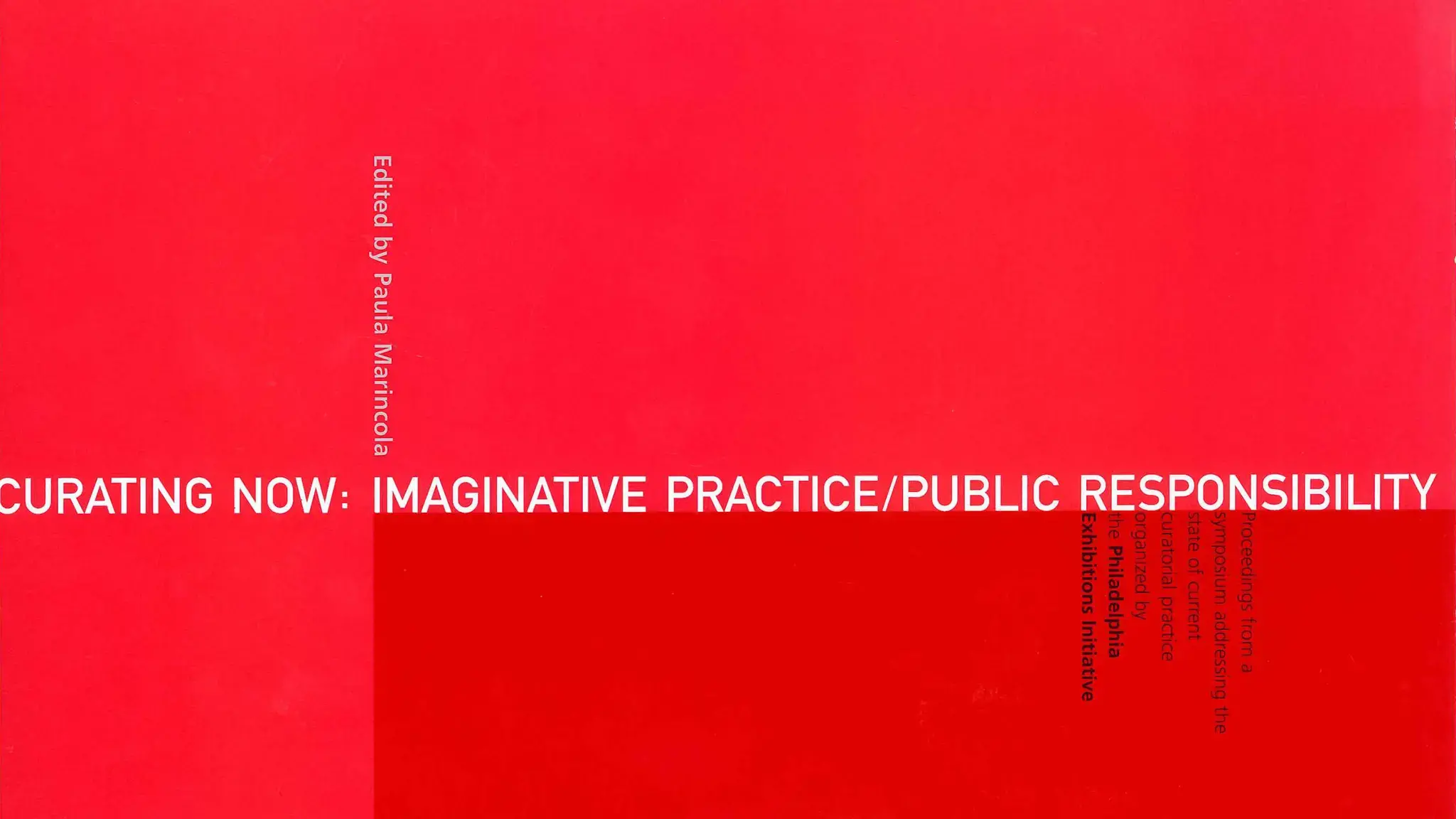Published in 2001 and edited by Paula Marincola, Curating Now: Imaginative Practice/Public Responsibility documents the proceedings of an October 2000 symposium that addressed the state of current curatorial practice. This event was organized by The Pew Center for Arts & Heritage and brought together a large segment of greater Philadelphia’s visual arts community, along with national and international arts leaders, to think and talk collectively about matters of deep importance to their field.
Click here to download the entire book as a PDF or scroll down for PDFs of selections from the book.
Excerpt from Robert Storr's "How We Do What We Do. And How We Don't"
What I am trying to emphasize […] is that we should work out of the contradictions inherent in our institutions, out of the ambivalences we may feel toward them and toward the larger art world, and out of our disputes with each other over matters of substance, in order to create an entity—an institution or an exhibition—that accurately reflects the dynamics of the art that we are responsible for presenting and preserving. In some cases that means taking the museum itself as our focus. In recent years, there have been a number of exhibitions devoted to the relation between artists and museums. I am thinking in particular of Kynaston McShine’s show The Museum As Muse, which, though I am not well-disposed to the idea of an auteur theory of curatorial practice in general, was, in the best possible way, an auteur exhibition, in the sense that it summarized Kynaston’s 30-year involvement with MoMA and has equally long-standing involvement with conceptual artists who have made challenging the museum a primary focus of their work. It was the reflection or meditation on art of a dedicated museum man that questioned the basic assumptions of the institution to which he had devoted himself, an institution into which he had, during his long tenure, consistently introduced work that tested that institution’s limits.
On that score, a couple of other historical details are in order. In 1928, Lincoln Kirstein and two of his friends created the Harvard Society for Contemporary Art, which was, in many respects, the prototype or model for what Alfred Barr set out to do when he created the Museum of Modern Art a few years later. The statement Kirstein wrote to announce the founding of his society declared that it was dedicated to “art that was decidedly debatable.” That, it seems to me, is a very good definition of what museums and institutes of contemporary art, and of modern art, should be doing.
Download the full book as a PDF >
PDF section downloads:
Front matter, preface, and introduction by Paula Marincola>
Part I: Morning session content, October 14, 2000 >
“How We Do What We Do. And How We Don’t” by Robert Storr
Panel statements and discussion from Paul Schimmel, Mari-Carmen Ramirez, Hans-Ulrich Obrist, and Thelma Golden
Audience Q&A
Part II: Afternoon session content, October 14, 2000 >
“Inventing New Models for the Museum and Its Audiences” by Kathy Halbreich
Panel statements and discussion from Ned Rifkin, Nicholas Serota, and Anne d’Harnoncourt
Audience Q&A
Part III: Morning session content, October 15, 2000 >
“Response” by Dave Hickey
Audience Q&A









